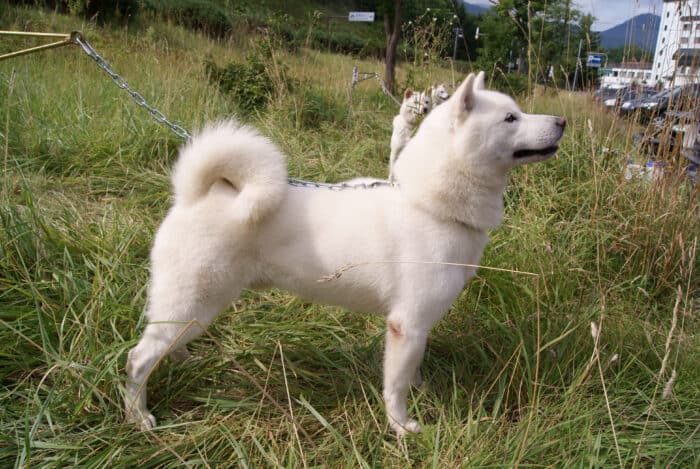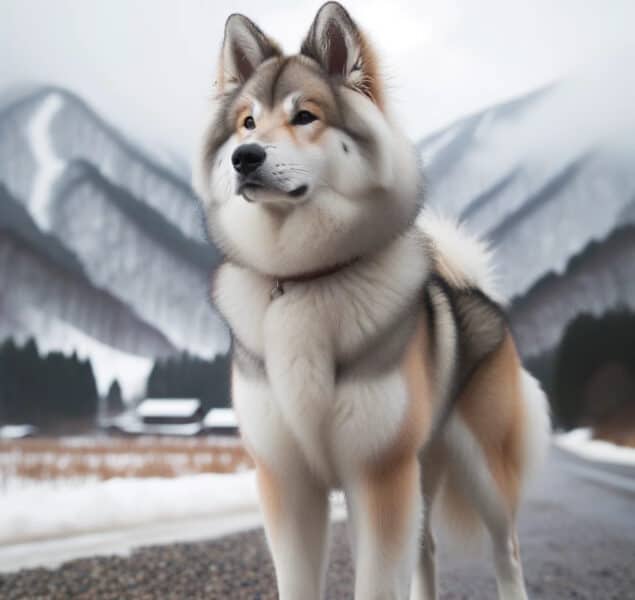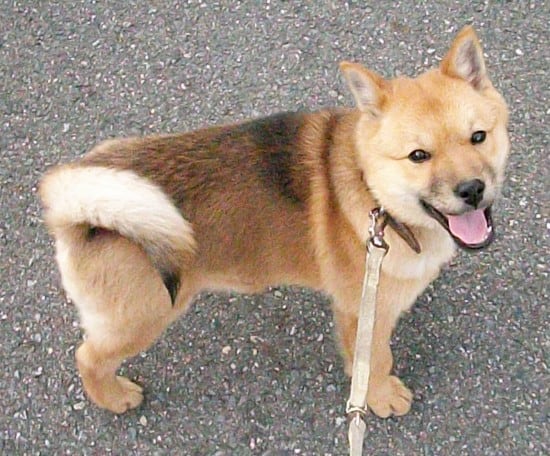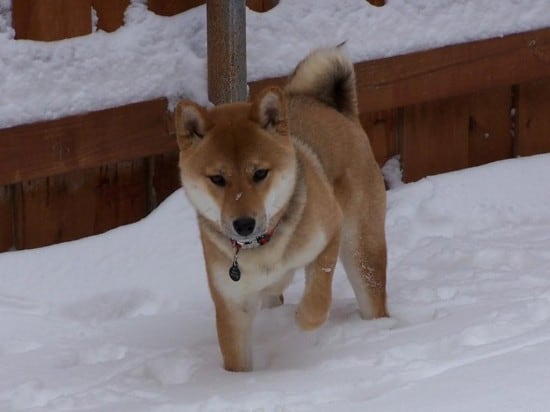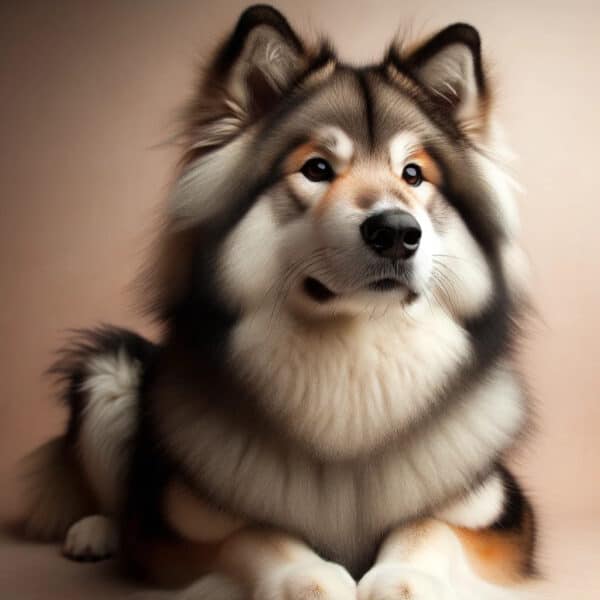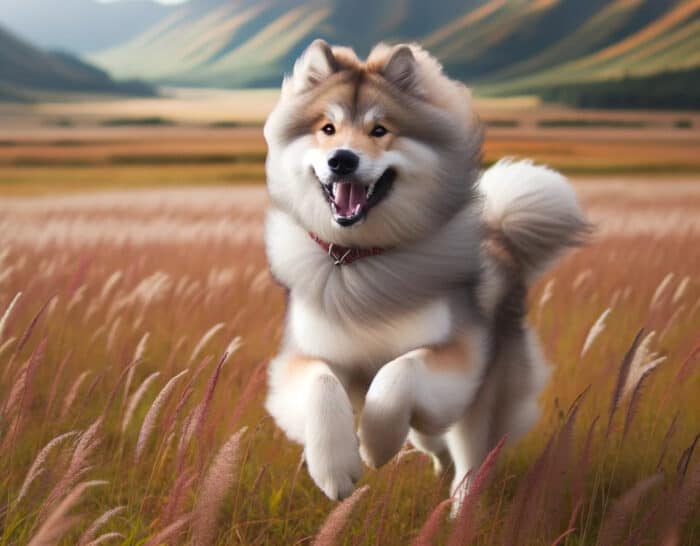The Ainu dog breed, originating from Japan, is gaining popularity for its distinctive features and temperament. Known for its intelligence and family-friendly nature, the Ainu stands out with its unique physical characteristics.
While not the most famous breed worldwide, it holds a special place in certain regions, especially in its native land. This breed is medium-sized, with a robust build, often drawing attention for its alert expression and thick coat.
Ainus are Intelligent and Loyal: Originally from Japan, they are known for their distinctive appearance and temperament.
Regular Grooming is Essential: Due to their thick double coat, especially during shedding seasons, regular grooming is a must.
Training Requirements: While they are eager learners, consistent training from a young age is crucial to manage their occasional stubborn streak.
Exercise and Mental Stimulation: Ainus require regular physical activity and mental challenges to keep them happy and healthy.
Health Concerns: Potential owners should be aware of the breed’s specific health issues, including hip dysplasia and certain eye conditions.
Ainu Breed – Quick Facts
| Feature | Description |
|---|---|
| Size | Medium; Height: 18-22 inches (45.7-55.9 cm) |
| Weight Range | 40-55 lbs (18-25 kg); Slight differences between males and females |
| Predominant Colors | White, brindle, red, black, and sesame |
| Fur Length and Type | Medium; Straight |
| Lifespan | 12-15 years |
| Activity Level | High |
| Intelligence Level | High |
| Ease of Training | Average |
| Good with Kids | Yes, with supervision |
| Training Requirements | Standard |
| Known Health Issues | Hip dysplasia, progressive retinal atrophy, and certain skin conditions |
Physical Characteristics of the Ainu
The Ainu dog has a medium stature, typically standing between 18 to 22 inches tall. Their weight generally ranges from 40 to 55 pounds, with males being slightly larger than females. This breed boasts a robust and sturdy build, giving them a look of strength and endurance.
Their coat is of medium length, straight, and dense, providing them protection against harsh weather conditions. Recognized coat colors for the Ainu include white, brindle, red, black, and sesame. The texture is coarse, designed to shield them from cold and wet climates.
One of the most striking features of the Ainu is its head. The muzzle is straight, leading to a pointed nose. Their triangular-shaped ears stand erect, giving them an alert and attentive expression. The eyes of the Ainu are small and dark, often exuding intelligence and curiosity.
While the Ainu doesn’t have any overly distinct markings, their coat coloration and patterns can vary, with some having more pronounced brindle or sesame patterns. Their movement is agile and swift, showcasing their hunting origins. The breed’s standard posture is upright and confident, displaying their fearless nature.
Ainu Temperament & Personality
The Ainu is renowned for its alert and intelligent temperament. They are often described as spirited and energetic, always ready for action. Being a breed with hunting origins, they possess a keen sense of their surroundings and are often vigilant.
When interacting with people, the Ainu displays a friendly demeanor. They are loyal to their families and can form strong bonds with their owners. While they are generally good with strangers, early socialization is beneficial to ensure they don’t become overly wary or shy.
Their interactions with other dogs and animals are typically calm, but like any breed, early exposure helps in fostering positive relationships.
In terms of training, the Ainu’s intelligence shines through. They are quick learners and can pick up commands with relative ease. However, their independent nature might require a bit more patience during training sessions. Consistency and positive reinforcement work best with this breed.
Ainus are active dogs, requiring daily exercise to maintain their physical and mental well-being. Without adequate activity, they might become restless or display unwanted behaviors. Their adaptability to various living situations is commendable. They can thrive in both apartments and houses, as long as their exercise needs are met.
When it comes to family life, the Ainu is compatible with children and other pets, though supervision is advised during interactions to ensure safety for all involved.
What Does The Ideal Home For an Ainu Look Like?
The ideal home for an Ainu considers both its physical and mental needs. Given their active nature, having access to an outdoor space like a large backyard is beneficial. This allows them to play, explore, and exercise freely. If a spacious yard isn’t available, daily walks and regular trips to the dog park can suffice.
Safety is paramount. It’s essential to have secure fencing to prevent the Ainu from wandering off, given their curious nature. They are explorers by instinct, and a secure environment ensures they don’t end up in potentially dangerous situations.
The Ainu’s adaptability means they can fit well into various family settings. However, homes with younger children should ensure interactions are supervised. This breed is gentle, but like any dog, sudden movements or loud noises might startle them. For households with elderly members or other pets, the Ainu’s friendly disposition makes them a good fit.
Considering their active disposition, proximity to open spaces or dog parks is a plus. This gives them the opportunity to socialize, play, and burn off energy. Additionally, access to good veterinary care is essential, given some of the breed-specific health concerns associated with the Ainu.
Can Ainu be left alone?
The Ainu’s independent nature might suggest they handle solitude well. However, like many breeds, they thrive on companionship and can experience separation anxiety if left alone for extended periods. Prolonged isolation can lead to destructive behaviors, such as chewing on furniture or excessive barking.
It’s crucial for potential Ainu owners to understand that while they display moments of independence, they still have emotional needs. Regular interaction, play, and bonding are essential for their well-being. If an owner’s lifestyle requires them to be away frequently, it’s beneficial to consider options like doggy daycare, hiring a pet sitter, or arranging playdates with other dogs.
Brief stints of solitude are manageable for the Ainu, especially if they have toys or activities to engage with. However, it’s always recommended to gradually increase the time they spend alone, ensuring they’re comfortable and secure in their environment.
Ideal Owner for an Ainu
The Ainu, with its alertness and spirited nature, ideally suits an owner who understands and appreciates these traits. While they can be a good fit for first-time dog owners, those with some experience in handling active breeds might find the journey smoother.
An active lifestyle complements the Ainu’s energy levels. Whether it’s daily walks, hikes, or play sessions in the park, the breed thrives when engaged in regular physical activity. They are not the best match for individuals who prefer a sedentary lifestyle.
Training an Ainu requires commitment. Their intelligence means they pick up commands quickly, but their independent streak might need consistent guidance. Using positive reinforcement methods, like treats or praises, can be highly effective. The ideal Ainu owner should be prepared to dedicate time to training, ensuring the dog understands boundaries and behaves well.
Given the Ainu’s bonding nature, the owner should be willing to spend quality time with them. This doesn’t only pertain to exercise or training but also simple activities like cuddling or playing fetch. This breed values companionship and thrives when they feel connected to their human family.
Are Ainu good with kids?
The Ainu breed generally interacts well with children. Their loyal and protective nature means they can form strong bonds with younger members of the family. Ainus are known for their patience, which makes them tolerant of the playful antics of kids.
However, it’s essential to remember that interactions between dogs and children should always be supervised, regardless of the breed. Kids should be taught how to approach and play with dogs respectfully, understanding the dog’s boundaries. Loud noises or sudden movements can startle any dog, including the Ainu.
Are Ainu aggressive?
The Ainu breed is not inherently aggressive. In fact, they are known for their loyalty and protective nature. However, like all dogs, certain situations or triggers can provoke defensive behaviors. It’s essential to understand that any signs of aggression usually stem from fear, territorial instincts, or a perceived threat.
Early socialization plays a crucial role in ensuring the Ainu develops well-rounded behaviors. Exposing them to various environments, people, and other animals during their formative months can help in reducing anxiety or fear in unfamiliar situations.
How Popular Is This Breed?
The Ainu, also known as the Hokkaido dog, originates from Japan and holds significant cultural importance in its homeland. In Japan, especially in the Hokkaido region, the Ainu is revered for its hunting prowess and loyalty. This breed has been a part of Japanese culture for centuries, often depicted in art and literature.
In the USA, the Ainu is not as widely recognized as some other breeds. However, its unique appearance and commendable traits have garnered it a dedicated following. Over the years, there has been a gradual increase in its popularity among dog enthusiasts and those seeking a loyal and active companion.
One factor contributing to the Ainu’s rising popularity in the West is the growing appreciation for native and ancient breeds. As people learn more about the Ainu’s rich history, resilience, and versatility, interest in the breed continues to grow.
Ainu Grooming
Grooming an Ainu requires consistent attention due to its medium-length, dense coat. Regular brushing, at least twice a week, is crucial to keep their fur free from tangles and matting. This routine not only ensures a healthy coat but also helps in reducing shedding and distributing natural oils across their skin.
For brushing, a sturdy bristle brush or a slicker brush works well for the Ainu’s coat type. These tools can effectively remove loose hairs and prevent matting. Additionally, using a metal comb can help in detangling any knots, especially in areas like behind the ears or under the legs.
While the Ainu doesn’t need frequent baths, washing them every couple of months or when they get particularly dirty is advisable. It’s essential to use a mild dog shampoo that retains the coat’s natural oils. After washing, thoroughly drying the Ainu is crucial to prevent any skin issues, given the density of their coat.
Professional grooming might not be a regular necessity for the Ainu. However, occasional visits can be beneficial, especially for tasks like nail trimming or ear cleaning. Some owners also opt for professional grooming sessions during shedding seasons to manage the increased hair loss.
One challenge some Ainu owners might face is the breed’s natural aversion to being groomed. Early exposure to grooming practices and positive reinforcement can make the process smoother for both the dog and the owner.
Do Ainu shed?
The Ainu breed has a double coat, which means they do shed, especially during the shedding seasons of spring and fall. During these times, owners can expect an increase in loose hairs around their homes. Regular brushing can significantly help in managing this shedding, collecting the loose fur and ensuring the coat remains healthy.
For those concerned about the shedding, using a deshedding tool during these peak seasons can be beneficial. These tools are designed to reach the undercoat, effectively removing loose hairs and reducing the amount of fur that ends up around the house.
Maintaining a clean living environment is crucial during shedding seasons. Regular vacuuming and using furniture covers can help in managing the loose hairs. For the Ainu, a balanced diet and proper hydration can also play a role in maintaining a healthy coat, potentially reducing excessive shedding.
Ainu Diet: What Do They Eat?
The Ainu’s dietary needs align with those of medium-sized, active dogs. A balanced diet, rich in proteins, fats, and essential nutrients, ensures their overall well-being. High-quality commercial dog food, formulated for active breeds, can be a suitable choice. Whether it’s kibble, wet food, or a combination, it’s essential to ensure the food meets the Ainu’s nutritional requirements.
Some Ainus might have specific dietary sensitivities or allergies. It’s crucial to observe any adverse reactions to certain foods, such as skin irritations, digestive issues, or changes in behavior. In such cases, a consultation with a veterinarian can help in identifying the best diet plan.
Treats can be a valuable training aid, but moderation is key. Overfeeding or providing calorie-dense treats can lead to obesity, a concern for many dog breeds, including the Ainu. It’s advisable to choose treats that align with the Ainu’s dietary needs and to consider them as part of the dog’s overall daily calorie intake.
Certain human foods are safe for Ainus in moderation, like lean meats, some fruits, and vegetables. However, foods like chocolate, grapes, onions, and certain artificial sweeteners are toxic for dogs and should be strictly avoided.
How to Feed an Ainu
Feeding an Ainu requires consistency and understanding of their dietary needs. Establishing a regular feeding routine helps in digestion and sets a predictable schedule for the dog. Most owners prefer feeding their Ainu twice a day, dividing the recommended daily portion into two meals.
The type of bowl used can make a difference. Stainless steel or ceramic bowls are durable and easy to clean, reducing the risk of bacterial growth. Some Ainus might eat quickly, which can lead to digestive issues. In such cases, a slow-feeder bowl can be beneficial, ensuring the dog takes its time to eat.
It’s essential to provide fresh water at all times, ensuring the Ainu stays hydrated, especially after physical activities or during hot weather. The placement of the water and food bowls should be in a quiet corner, allowing the Ainu to eat without disturbances.
How Much to Feed an Ainu
The exact amount to feed an Ainu can vary based on several factors, including age, weight, activity level, and overall health. As a general guideline:
- Puppies: Ainu puppies have higher energy needs and require more frequent feedings. Typically, they should be fed 3 to 4 times a day. As they grow, the portion sizes and frequency can be adjusted.
- Adults: An adult Ainu, depending on its weight and activity level, might require anywhere from 1.5 to 2.5 cups of high-quality dog food daily. This amount should be divided into two meals.
- Seniors: Older Ainus might have decreased energy needs. Their dietary requirements can shift, and they might require less food than their younger counterparts. Regular weight checks and vet consultations can help in determining the right amount.
It’s essential to use the feeding guidelines provided on commercial dog food packages as a starting point. However, individual needs can vary, and it’s crucial to monitor the Ainu’s condition. A dog that’s gaining unnecessary weight might require a reduction in food quantity or a shift to a lower-calorie diet. Conversely, an underweight or highly active Ainu might need additional nutrition.
Health Considerations
The Ainu is generally a healthy and robust breed, but like all dogs, they have certain health concerns that potential and current owners should be aware of.
Hip Dysplasia: This is a common concern in many medium to large dog breeds. It’s a condition where the hip joint doesn’t develop correctly, leading to arthritis and pain. Regular check-ups and maintaining an optimal weight can help manage and prevent the condition.
Eye Conditions: Some Ainus might be prone to specific eye conditions like progressive retinal atrophy or cataracts. Regular eye check-ups can help in early detection and management.
Skin Issues: Sensitivities or allergies can lead to skin problems. It’s essential to monitor any changes in the coat or skin, like excessive scratching, redness, or bald patches. A proper diet and regular grooming can help in preventing many skin-related issues.
The average lifespan of an Ainu ranges from 11 to 15 years. As they age, they might face typical age-related issues like decreased mobility, vision problems, or digestive concerns. Regular vet visits, a balanced diet, and moderate exercise can support them through their senior years, ensuring they remain active and comfortable.
How much exercise do Ainus need?
Ainus are active and energetic dogs that require regular exercise to maintain their physical and mental well-being. On average, an Ainu should have at least 30 to 45 minutes of moderate to intense activity daily. This can be in the form of walks, play sessions, or training activities.
Walks are essential not just for physical activity but also for mental stimulation. Exploring new environments, encountering various scents, and interacting with different stimuli during walks can be beneficial for the Ainu’s cognitive health.
Apart from walks, Ainus enjoy play sessions. Fetch, tug-of-war, or interactive toys can be great ways to engage them. Given their intelligence and eagerness to please, they also excel in training sessions, whether it’s basic obedience or more advanced activities like agility courses.
Ainus are versatile and can adapt to various activities. Whether it’s hiking, running alongside a bike, or even swimming, they are up for the challenge. However, it’s essential to ensure that any activity is safe and suitable for the dog’s age and health condition.
Ainu Training
Training is an essential aspect of raising a well-behaved and well-adjusted Ainu. Given their intelligence and eagerness to please, Ainus can be relatively easy to train, but consistency and positive reinforcement are crucial.
Starting training early is beneficial. Puppy training classes can provide a solid foundation and also offer the added benefit of socialization. Basic commands like sit, stay, come, and heel should be introduced early on. Ainus respond well to positive reinforcement methods, where good behavior is rewarded with treats, praise, or play.
Socialization is equally important. Exposing the Ainu to various environments, people, and other animals at a young age ensures they grow up to be well-rounded and confident adults. Regular trips to parks, pet stores, or even car rides can be beneficial.
While Ainus are generally eager learners, they can sometimes display a stubborn streak. In such cases, it’s essential to remain patient and consistent. Avoid using negative reinforcement or punishment, as it can lead to fear or aggression. Instead, focus on redirecting unwanted behaviors and rewarding desired ones.
Advanced training, such as agility or obedience competitions, can be a great way for Ainus to channel their energy and intelligence. They excel in tasks that challenge them mentally and physically.
Potty training is another crucial aspect. Establishing a routine, taking them out after meals, and rewarding them for doing their business outside can lead to successful potty training.
House manners, like not jumping on guests or chewing on furniture, should also be established early on. Given their intelligence, Ainus can sometimes be opportunistic, so setting clear boundaries is essential.
Are Ainus easy to train?
Ainus are generally known for their intelligence and eagerness to please, making them relatively easy to train. However, like any dog breed, they have their own set of challenges.
Their intelligence means they pick up commands quickly, but it can also lead to them becoming easily bored. Varied training sessions that challenge them mentally can keep them engaged. Using interactive toys or changing up the routine can help maintain their interest.
While they are eager to please, Ainus can sometimes display an independent or stubborn streak. In such cases, patience and consistency are vital. It’s essential to establish oneself as the leader early on to ensure the training process goes smoothly.
Positive reinforcement methods, like treats, praise, or play, work best with Ainus. They respond well to rewards and are more likely to repeat behaviors that earn them praise or treats.
Are Ainus smart dogs?
Yes, Ainus are considered smart dogs, showcasing both intellectual and instinctual intelligence. Their cognitive capabilities are evident in their quick learning ability and problem-solving skills. They can grasp new commands swiftly, often requiring fewer repetitions than many other breeds.
Their intelligence isn’t just limited to learning commands. Ainus exhibit a keen sense of awareness and understanding of their environment. Their instinctual intelligence shines in tasks related to their ancestral roles, such as hunting or guarding. Their ability to read situations, anticipate outcomes, and act accordingly is a testament to their cognitive strengths.
What are the drawbacks of Ainus?
While Ainus are cherished for their intelligence and loyalty, like every breed, they come with their own set of challenges and considerations for potential owners.
Behavioral Challenges: Ainus can sometimes exhibit stubbornness, especially if they aren’t trained consistently from a young age. Their intelligence, while a boon, can sometimes lead to them being opportunistic, trying to outsmart their owners or finding ways to bypass rules.
Health Concerns: Like many purebred dogs, Ainus may be prone to specific health issues, including hip dysplasia and certain eye conditions. Potential owners should be aware of these concerns and be prepared for regular vet check-ups and possible treatments.
Grooming Requirements: Ainus have a thick double coat that requires regular grooming. While they aren’t as high-maintenance as some long-haired breeds, they do need consistent brushing to prevent matting and to keep their coat in good condition. Seasonal shedding can also be quite significant, requiring additional grooming efforts.
Exercise Needs: Being an active breed, Ainus require regular exercise. A simple walk might not be enough; they benefit from more vigorous activities and mental stimulation. Without proper exercise, they can become restless and may develop behavioral issues.
Training Needs: While they are generally eager to please and intelligent, Ainus require consistent and positive reinforcement-based training. An inconsistent approach can lead to them becoming confused or even resistant to commands.
Popular Ainu Mixed Breeds
Mixed breeds have gained popularity in recent years due to the potential benefits of combining the best traits of two different breeds. Ainus, with their distinct appearance and temperament, have become part of this trend.
The primary motivations for mixing Ainus with other breeds are varied. Some breeders aim to combine the Ainu’s intelligence and loyalty with the traits of another breed to create a unique mix that might be healthier, have a distinct appearance, or possess a certain temperament.
A few of the popular Ainu mixes include:
Ainu and Labrador Retriever: This mix often results in a dog that’s loyal, intelligent, and family-friendly. They typically have a medium to large build and a coat that can vary in length and color.
Ainu and German Shepherd: This blend can produce a dog with a strong guarding instinct, combined with the Ainu’s loyalty and intelligence. They often have a muscular build and a dense coat.
Ainu and Golden Retriever: A mix that often brings together the best of both breeds – the Ainu’s intelligence and the Golden’s friendly nature. This mix is generally good with families and other pets.

